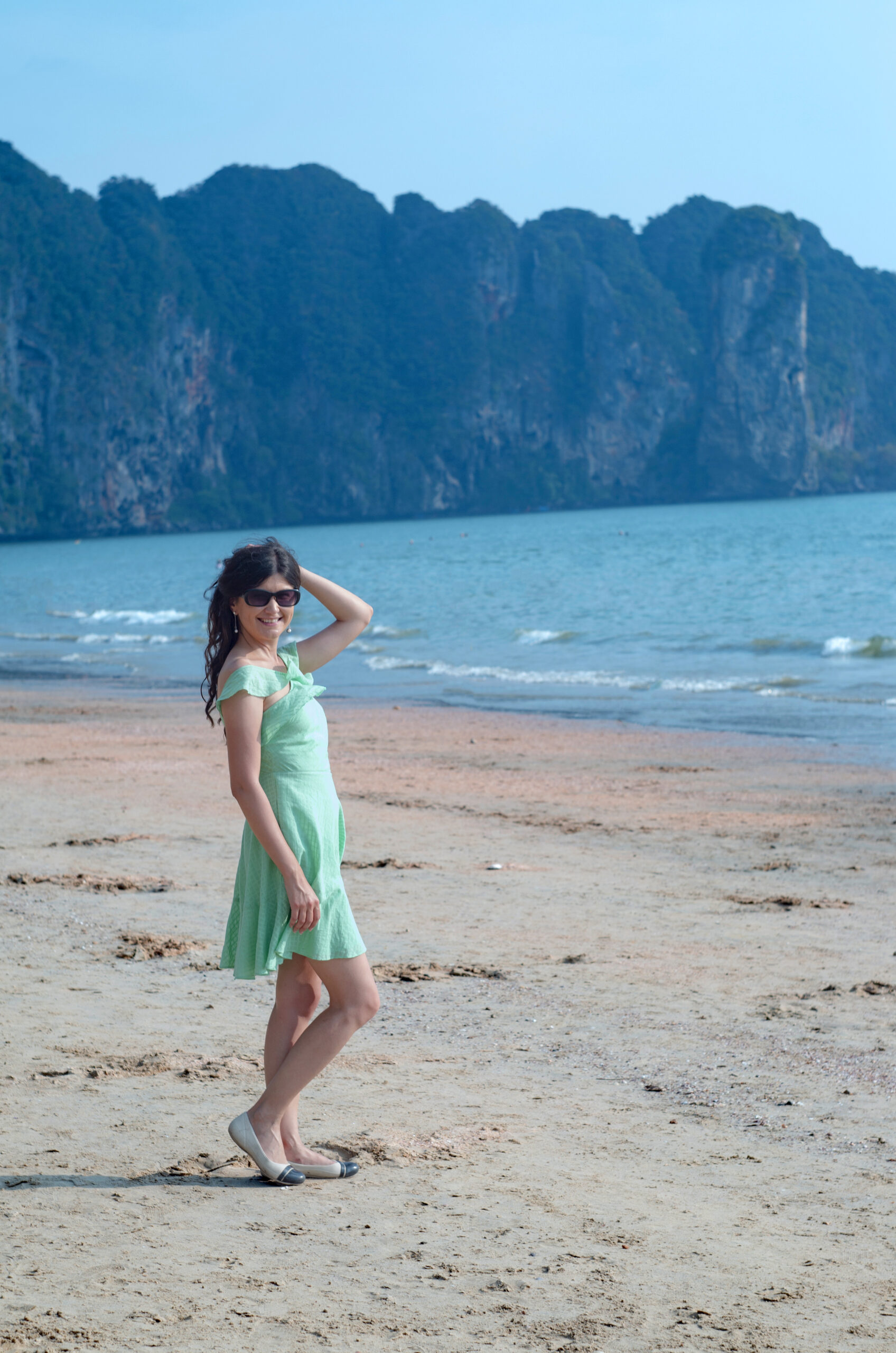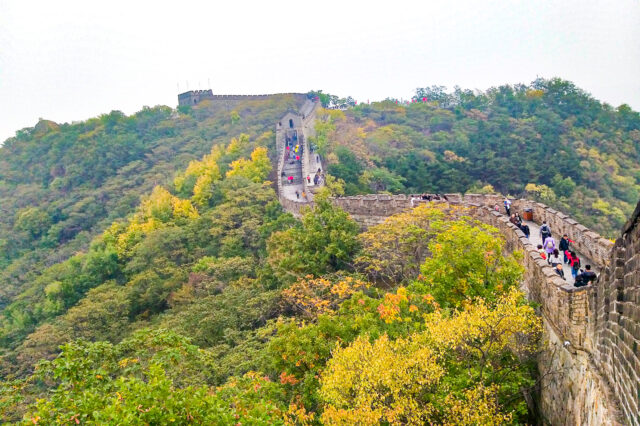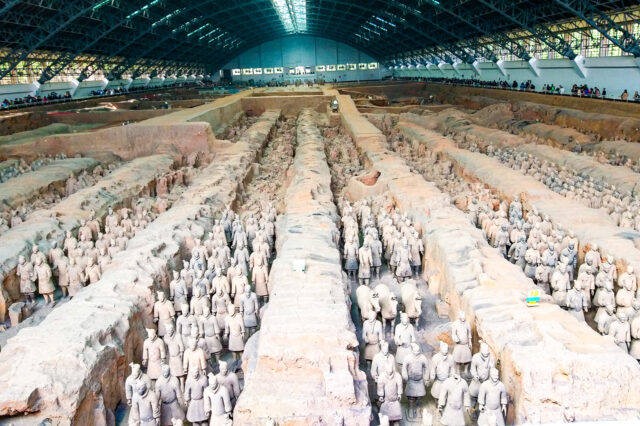Quick heads‑up, fellow travelers: Hit the Road Ket contains some affiliate links. Book through them and I earn a small commission at no extra cost to you – fueling my caffeine fix and future travels! For more details, see my Disclosures.
Beijing, a city of 22 million people and the most important tourist destinations in China is often the entry point for tourists. Its beautiful architecture, historical monuments, gorgeous parks, arts and crafts, atmosphere, food and many other characteristics make it one of the distinct cities and, understandably, very attractive for touristy. Needless to say, we were among those fascinated tourists 🙂
China’s capital has a history of almost 3 millennia and it’s not surprising that it counts 7 UNESCO World Heritage sites. Beijing has undergone transformation from a small less significant city to its current glory. Its prosperity started in 1403, when it became the Imperial capital. The monuments built in the 15th century (Forbidden City, Temple of Heaven) still remain the most prominent here.
Based on my own experience of traveling with my sister and mother, I developed this guide to help you navigate Beijing with ease. You will find the tips for finding accommodation, choosing transport options, booking tickets and more.
Below I will list the Beijing-specific tips. For general tips for visiting China, which also applies to Beijing, please, see the relevant post here.
How Many Days to Spend in Beijing?
With 7 UNESCO sites, wonderful museums and attractions, Beijing has a lot to offer for any length of stay. You need at least 2 days to get a glimpse and visit the Great Wall and the Forbidden City. However, to experience the major sites, you need at least 4 days in Beijing.
Actually, if you are a citizen of one of the 55 listed countries (see the official website), including the US, Australia, UK, Japan, Argentina Brazil or certain EU member states – you may be eligible for a free transit visa if you are flying to a third country after Beijing. It used to be a 144 hour visa free transit, however, in 2024, it became 240 hours. Keep in mind, that in this case you will stay in designated area – in case of arriving to Beijing it would be Beijing municipality.
For overall information about the visa procedures and entry, see my dedicated article.
Where to Stay in Beijing: Accommodation Guide
Important note: Every foreigner who visits China has to register with the authorities within the first 24 hours. If you stay at a hotel, they will scan your passport and do it for you. However, if you stay at Aibnb or Vrbo homes, you will have to do this yourself. Please, be aware of this, as some foreigners have gotten in trouble due to lack of preparation.
I didn’t want to hassle of figuring out how to register, therefore, decided to book exclusively hotels in China. I advice all travelers to do the same, as it’s one less thing to worry about.
While Beijing has a lot of different options for accommodation, it’s one of the most expensive cities to stay in China. I believe the fact that it’s a tourist hub contributed to this. Staying near the Tiananmen square would break the bank.
However, it is noteworthy that sightseeing in Beijing is very spread out around the city. Thus, you will definitely need to take public transportation almost every day. Therefore, my main suggestion is to stay near a metro station on one of the main lines. The metro network is very convenient and efficient. Keep in mind that buses are very inconvenient around China. It’s difficult to figure out routes, when you don’t speak the language. Besides, they get stuck in traffic and are extremely slow, so you will lose a lot of time with them.
Where We Stayed in Beijing
I chose our hotel, due to its relatively reasonably price compared to more central accommodation options and the proximity to metro. Happy Dragon Alley Hotel was 3 minutes walk from Zhangzizhong Road metro station on Line 5 and this saved us a lot of time. Plus, the hotel provided rooms for families so I was able to book for the three of us.
The hotel staff were nice and happy to help, even though only some of them speak English. The facilities were quite good for the price, basic but with every amenities everything available. The room was clean but a bit cold in October, which is understandable, as the central heating still wasn’t on.
There was a bit of an issue with the toilet, which will probably not effect most travelers – the water wasn’t filling up to flush. The staff was very nice and tried to help. Despite them bringing a technician next morning, it wasn’t fixed till the third day. However everything else was working so we made do with collecting water from the sink to flush when we came back from sightseeing, we found out that the water didn’t collect to flush the toilet.
Transport in Beijing
How to Get to Beijing
Beijing has extensive plane and train connections. It has 4 airports, 2 of which are international. It also has 3 major train stations. Beijing South Railway Station is from where high speed trains run to Shanghai, Hangzhou, Fuzhou, etc.; while Beijing West Railway Station serves high speed trains running to Xi’an, Hong Kong, Chengdu and many other major directions.
Trip.com was the most convenient option for me to book all railway tickets, while in China.
How to get from Beijing Daxing International Airport to City Center: The connection to the city is really convenient with Daxing Airport Express linking with metro line 10 at the Caoqiao station. We took this route. There is also the high speed train connecting to the Beijing West Railway station. Shuttle buses are also available.
How to get from Beijing Capital International Airport to the City Center: Airport Express train is connected to the Dongzhimen metro station, while various shuttle buses have routes all around the city.
How to get from Beijing West Railway Station to the City Center: The most convenient way is hopping on the metro – lines 7 and 9 serve this train station.
How to get from Beijing South Railway Station to the City Center: Once again, metro is the best option – just take either line 4 or 14.
Getting Around in Beijing
The city is vast, so wherever you stay, you will need to use transport. If you are taking buses or taxis, roads can be extremely congested, especially during the peak hours, therefore consider this before choosing your transport options.
Metro is a great option, it’s convenient, easy to orient, very clean and even has toilets at every stop. I expected to have difficulty figuring out metro stations, however, that absolutely wasn’t the case. Signs were very clear with English information. I had far harder time figuring out metro stations in Japan – those definitely lack clear directions 🙂
Buses in China aren’t as easy to figure out, unless you can read and understand some Mandarin. Although the map apps may help, it’s still very difficult to use buses.
Beijing Transport Tickets
There are several options for purchasing transport tickets in the city:
- You can get single tickets using cash at the ticket machines.
- You can also get single tickets or Yikatong Card at the ticket counters, however, not all stations have them.
- Alipay or WeChat are the most commonly used methods. You need to link your card – they accept foreign cards now. Then you can purchase individual tickets or day passes and generate a QR code to pass the gates with.
- Some stations allow payment by foreign bank cards, including Visa, Mastercard and American Express.
- If you are visiting for at least a few days, you should get Yikatong Card, which costs 20 yuan. You then charge it and use for all transport around the city. Like London’s Oyster Card, it’s very convenient because you don’t have to figure out the fares.
Here is the general information and tips about transport in China
Beijing is not a difficult city to get around by public transport. However, if you prefer to take tours, check via Klook, GetYourGuide, Trip.com.
What to Book in Advance for Visiting Beijing
There are a few major attractions that are either a must or recommended to be booked in advance. Here is the relevant list:
- Forbidden City: The Forbidden City ticket booking requires more detailed explanation. Therefore see my thorough guide in my dedicated article.
- National Museum of China: This Museum located on the Tiananmen Square is free. However, you must reserve the visit online. The free tickets are available via Trip.com. However, they sell out very fast. Therefore, check them at 5pm China time 7 days before you wish to visit. You will need to be fast though.
Note: If you have either Forbidden City or National Museum of China tickets, that include Tiananmen Square reservation and you won’t have to reserve separately.
- Tiananmen Square: While the “ticket” is free of charge, you still need to make a reservation in advance. This can be done either via official website or WeChat. ALternatively, if you can’t figure out the official platforms (for instance, WeChat kept me sighning out), you can use GetYourGuide, Expedia or Viator. They charge about 30 yuans, as a fee, but if if necessary, this commission isn’t too high.
Other major attraction tickets, like Summer Palace, Temple of Heaven, Great Wall, Jingshan Park – can be purchased on the spot. However, if you are traveling during the high season, you may encounter long queues. Therefore book these attractions in advance, if you prefer. You can see my relevant guides on where to purchase tickets linked.
Food in Beijing
While we are not foodies, we enjoyed some restaurants in Beijing. Here is what we tried and liked:
Beijing
- The Grandma’s inside a mall on Wangfujing road – this is a chain from Hangzhou, which is very popular. We had to wait for a table for a while.
- Jingzun restaurant – this place is very popular for its Peking duck. I found a recommendation to come here to try it. While we generally were not fans of the dish itself, it was well-prepared.
- Green Tea restaurant – another chain from Hanzgzhou. The wait was half an hour, which is very normal in Beijing. The environment was lovely.
- Li Qun Roast duck restaurant near Qianmen square – while we didn’t get a chance to try, it came highly recommended for trying Peking duck. It’s on the expensive side, but very close to major tourist sites.
Other Tips for Traveling to Beijing
- Make sure to have your passport with you at all times. The reason for this is firstly, that Chinese law requires this. Secondly, passport is often used, as a ticket to many attractions, like in Forbidden City. So if you don’t have it with you, you can’t enter.
- Air quality in Beijing (like in many spots around China) is often quite bad. That’s the reason, why locals often wear masks, not just to protect themselves from COVID.
- As expected, hardly anyone spoke any English. But people were very nice and tried to help using WeChat. We also used Google translate to try to communicate, whenever we needed something.
Beijing Perfect Itineraries
Beijing in 2 days
Day 1 highlights: Tiananmen Square, Forbidden City, Jingshan Park Wangfajing Road
Day 2 highlights: Great Wall of China, (if time permits) a short visit to the Summer Palace, Sanlitun area
Beijing in 3 days
Day 3 highlights: Beijing Zoo, Summer Palace (you can also spend the whole day in Summer Palace instead), Starry Street.
Beijing in 4 days
Day 4 highlights
Temple of Heaven, Lama (Yonghe) Temple, Bell and Drum Towers, Hutongs, Beihai Park
See also:

Hello I am Ket,
A traveler, planner, and sweet tooth behind Hit the Road Ket.
Travel isn’t just my passion – it’s a lifeline for my mental health. Having lived in three cities and explored 60 countries (and counting!), I created this blog to share my experiences, smart tips, and itinerary advice with fellow travel lovers. I’m all about making the most of limited time, finding scenic routes, and turning every trip into something memorable – coffee in hand, of course.





